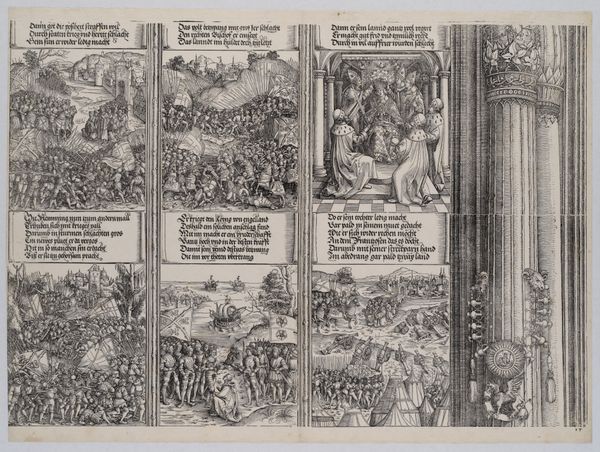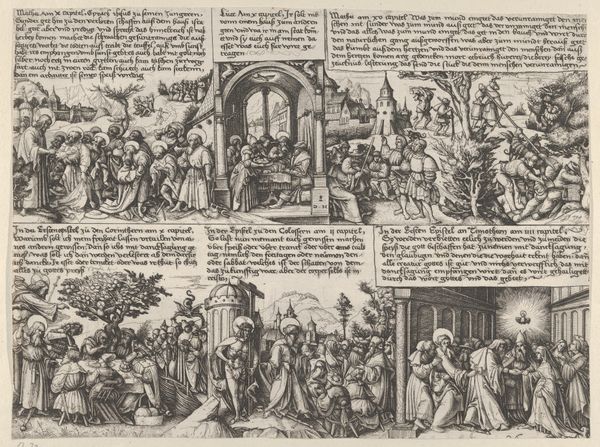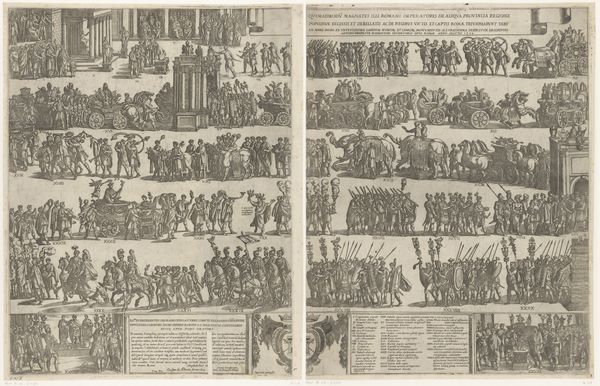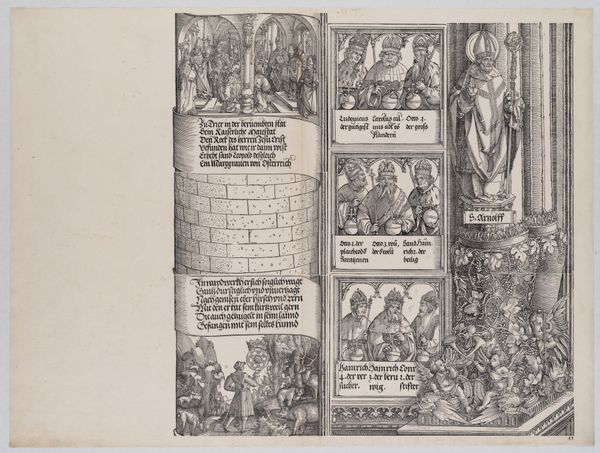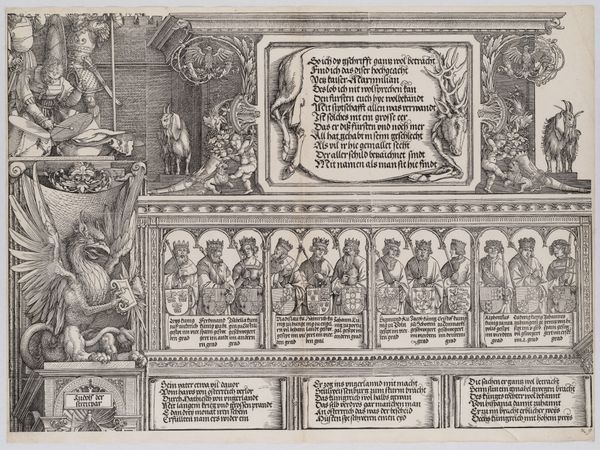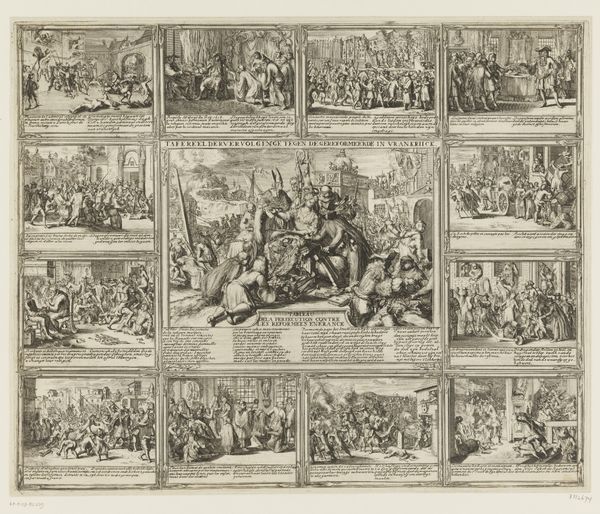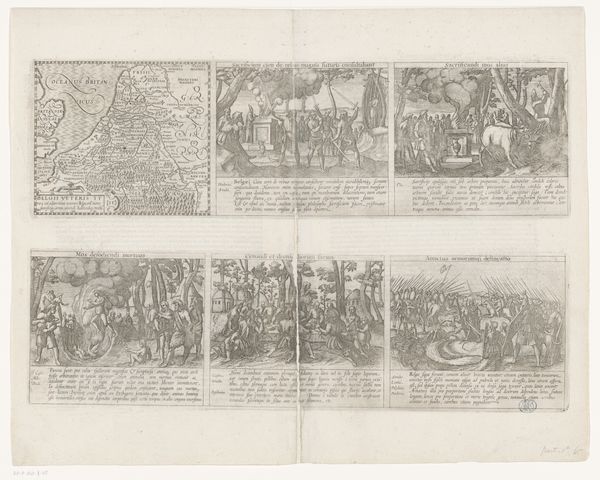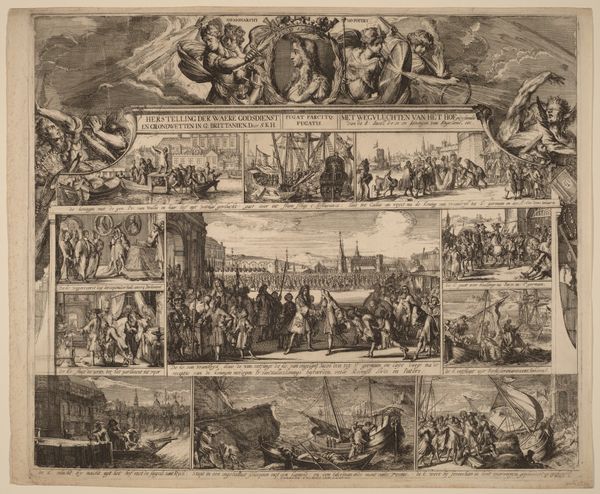
The Marriage of Philip the Fair to Joanna of Austria; Maximilian Recaptures the Occupied Territories from Hungary; The Conquest of Hungary; The Swiss War; The Liberation of Naples; and The Battle of Wenzenberg, from the Arch of Honor, proof, dated 1515, printed 1517-18 1515
0:00
0:00
Dimensions: Sheet: 18 1/4 in. × 25 in. (46.4 × 63.5 cm)
Copyright: Public Domain
This Triumphal Arch, conceived by Emperor Maximilian I and cut in wood by Albrecht Dürer around 1515, is teeming with symbols of power and dynastic ambition. Dominating the composition, the figures of emperors and triumphant processions are clear visual symbols of power. However, if we examine the lower left corner, we see the inclusion of grotesque masks emerging from classical columns. This is a powerful visual motif in the Renaissance, linking the classical past with the present. The masks, though unsettling, are a motif of transformation and protection, reminiscent of the apotropaic masks used in ancient rituals. The faces carry with them the weight of ancient fears and subconscious forces, designed to ward off evil and protect the emperor's reign. This blending of triumph with the archaic represents how rulers sought to legitimize their power through historical and mythical associations. The grotesque also touches on darker aspects of power, the anxieties and the repressed fears that accompany such elevated status. Thus, this image shows how symbols of power are never straightforward. They are laden with complex, often contradictory, layers of meaning passed down through generations.
Comments
No comments
Be the first to comment and join the conversation on the ultimate creative platform.
